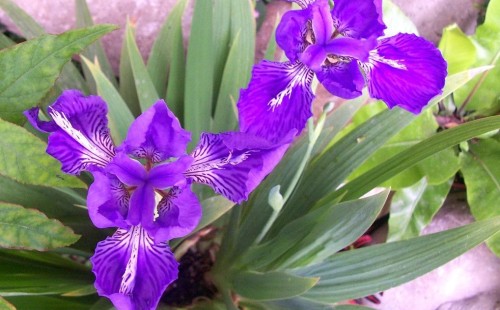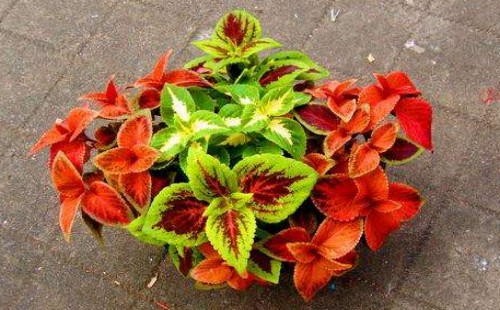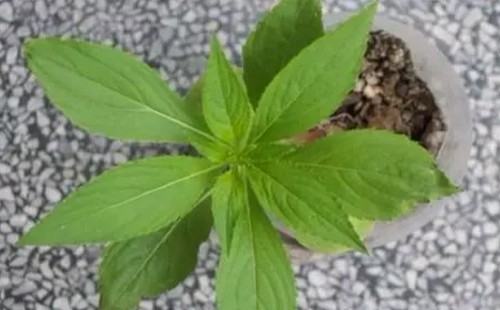How to raise Iris-the Culture method of Iris
Iris has many varieties, rich colors and bright colors. Iris is a kind of flower plant with great ornamental value, which can not only be applied to landscaping, but also can be planted in pots. Iris usually has a plant height of 80-90 cm and blossoms in a warm May, which is also a good time to enjoy flowers.

Potted iris can propagate seedlings through bulbs, and most of them are planted in September in autumn. if they are well managed, they can blossom in the second year; at the same time, they can also be sowed and propagated, but it is more demanding to breed seedlings by this method. and it usually blossoms in the third year after planting. However, no matter which method is used to breed kittens, we should do a good job in maintenance and management, especially the daily maintenance after shaping.
So, how to grow potted irises? The editor shares the experience with netizens with his own practice, and now shares the breeding method of iris with you. I hope it will be helpful to you.
I. preparation of potted soil
Iris likes to grow in a fertile soil environment rich in humus, and unlike other potted flowers and plants, it also likes clayey soil, or potted in alkaline soil mixed with limestone, the growth effect is better. Because Iris is a kind of acid-loving flower, if it is planted in acidic soil, it will grow poorly.
Second, light and temperature environment
Iris is very suitable for growing in the growth environment of 15 °C-17 °C, so when growing in pots, in order to keep the plants in a good state of growth, we should timely regulate the temperature in the growth environment. And under the continuous high temperature in summer, it should be properly shaded to avoid sunburn.
III. Humidity requirements
Iris prefers to grow in a humidity of 75% and 80%, which shows that it is also a kind of plant that likes wet. When the humidity is too high in cloudy and rainy days, it is necessary to reduce the humidity by heating and improving ventilation in time, so as to keep the plant growing healthily.
Fourth, watering and replenishing water
Iris prefers a moist growing environment, so it naturally has a higher demand for water. Original if there is a lack of water or often lack of water in the process of maintenance and management, it is likely to cause slow germination and dysplasia of plants. At the same time, in addition to timely watering, replenishment should also be uniform, it is necessary to spray foliar water to moisturize and cool down, but also to keep the branches and leaves clean.
5. Fertilization and topdressing
Before transplanting irises into the pot, in order to increase the nutrients in the basin, it is usually necessary to add some mature compost in the basin, and some substances such as bone powder and plant ash can be added as base fertilizer. During the growing period, in order to maintain rapid growth, it is necessary to apply appropriate amount of chemical fertilizer, especially before flowering, in order to improve the quality of flowering, chemical fertilizer can be applied 1-2 times.
VI. Disease and pest control
The disease easily caused by potted iris in the process of conservation and management is mainly soft rot. Once it is found that the plant is infected with this disease, the plant should be dug up and cut off the rotten part in time, disinfected and sterilized and then replanted in a pot. From April to May, some wettable imidophos can be watered to prevent the occurrence of insect pests. And after entering the winter, it is necessary to clean up the withered branches and leaves in time and keep the leaves clean so as to reduce the risk of diseases and insect pests.
Time: 2019-05-29 Click:
- Prev

How to cultivate Colored Clover-Colored Clover Cultivation Method
Colored clover leaves colorful, so it has a wide range of uses. People can not only plant it with other flowers and plants to improve the aesthetics, but also can be planted as a potted plant alone, and the ornamental is also excellent. As a family potted plant, it is usually placed in the living room, study and other places
- Next

How to raise potted impatiens
Although impatiens has indomitable vitality and strong ability to adapt to the environment, as a potted plant, the maintenance and management process must not be careless. Because scientific and reasonable conservation and management means can ensure that potted plants can blossom on time and have high ornamental value, then how to raise potted impatiens?
Related
- Fuxing push coffee new agricultural production and marketing class: lack of small-scale processing plants
- Jujube rice field leisure farm deep ploughing Yilan for five years to create a space for organic food and play
- Nongyu Farm-A trial of organic papaya for brave women with advanced technology
- Four points for attention in the prevention and control of diseases and insect pests of edible fungi
- How to add nutrient solution to Edible Fungi
- Is there any good way to control edible fungus mites?
- Open Inoculation Technology of Edible Fungi
- Is there any clever way to use fertilizer for edible fungus in winter?
- What agents are used to kill the pathogens of edible fungi in the mushroom shed?
- Rapid drying of Edible Fungi

